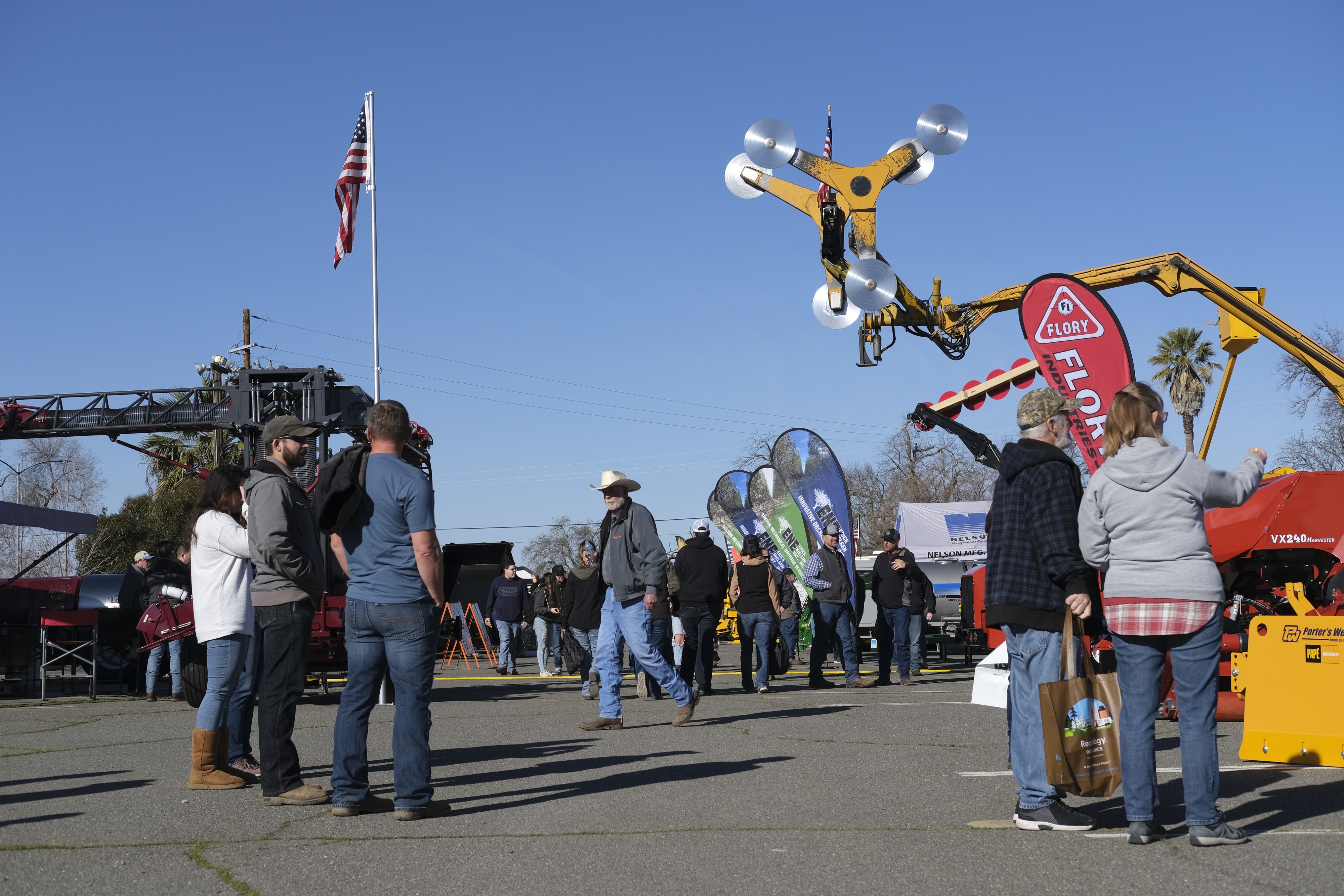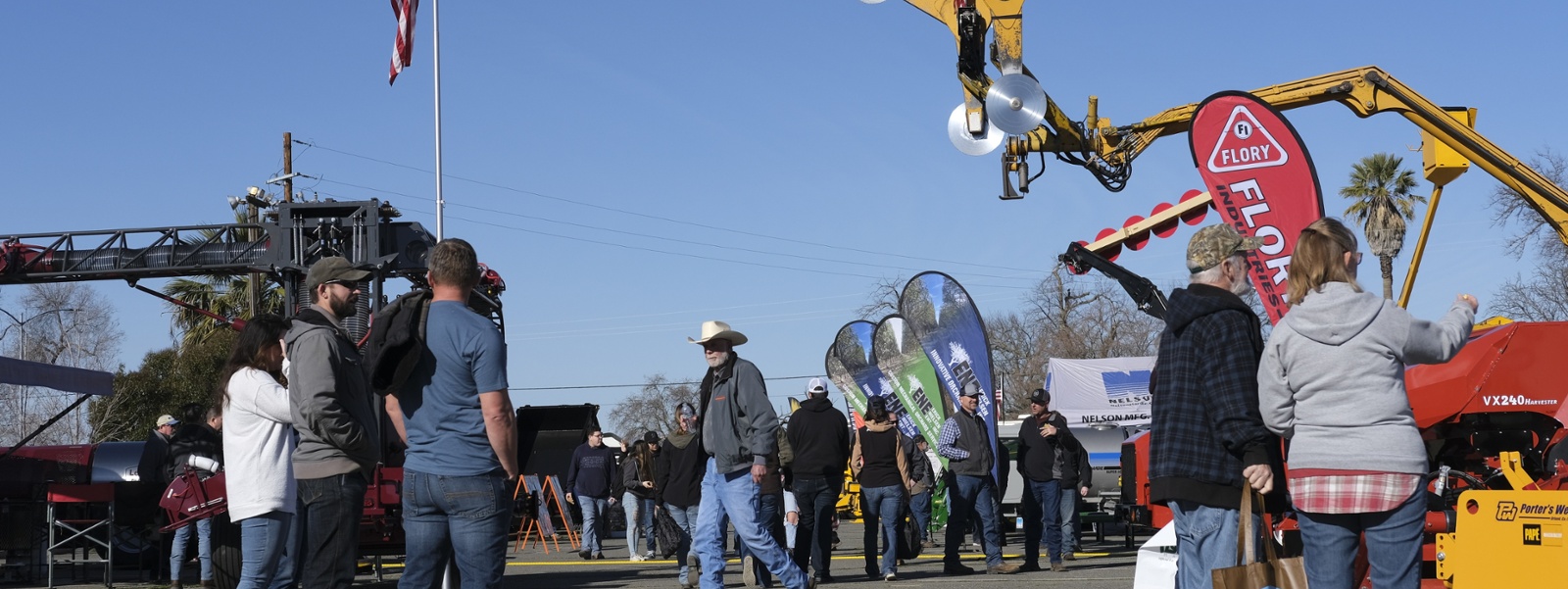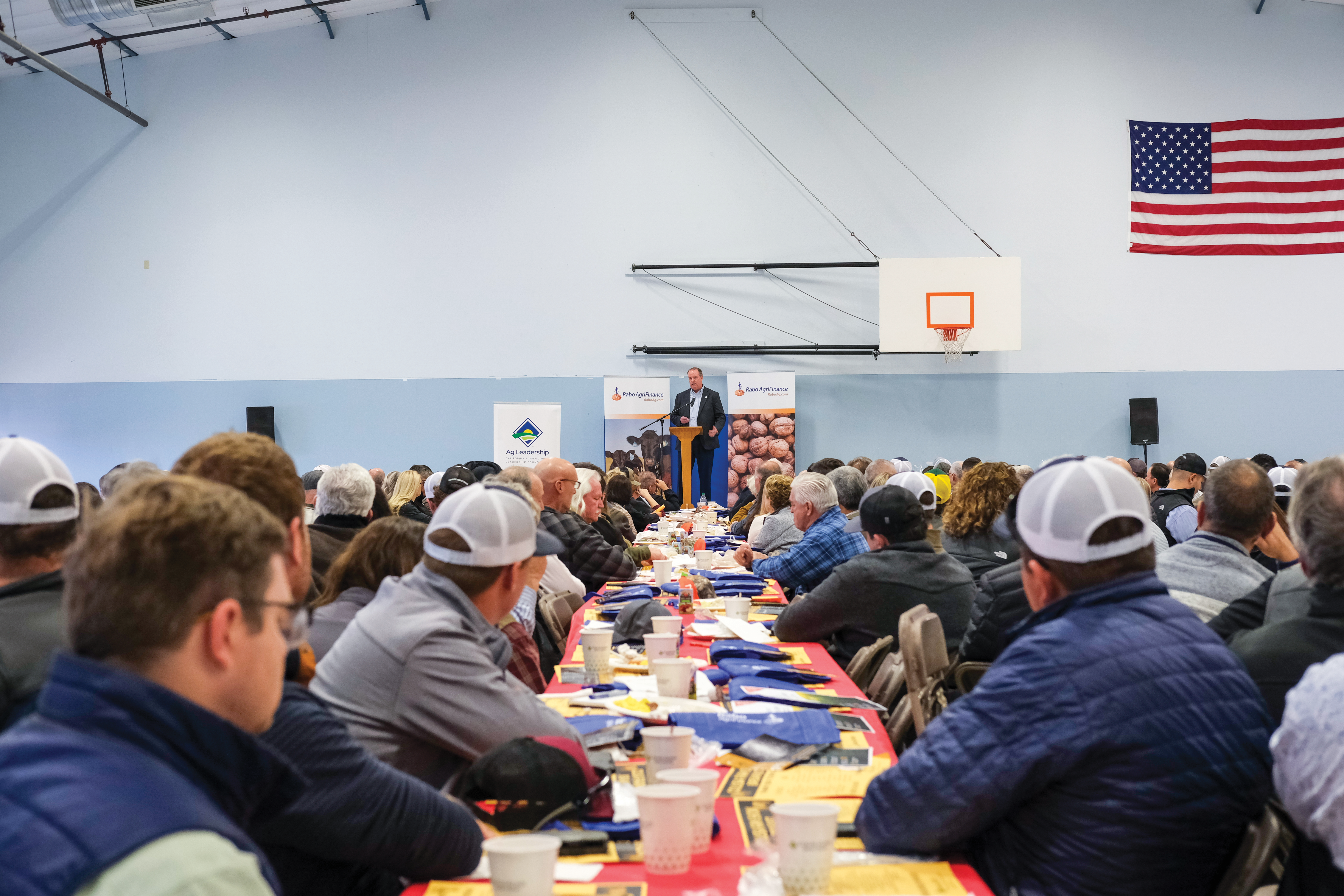Hard-hit Colusa celebrates its ag heritage

Colusa’s agricultural community came together last week to host the 58th annual Colusa Farm Show.

Visitors gather at the Colusa Farm Show, held in a region where drought severely impacted rice production and other crops. Farmers turned out to check out agricultural equipment and technology and gather knowledge to help boost farming outcomes in future crop years.

By Caleb Hampton
Colusa’s agricultural community came together last week to host the 58th annual Colusa Farm Show. Farmers and agricultural suppliers from around the world attended the trade show, which featured more than 300 exhibitors.
The Feb. 7-9 event came after a year of historic challenges for Colusa County farmers. The county’s two biggest commodities are rice and almonds, both of which faced major setbacks in 2022 due to drought and other factors.
“It is a crazy time to be in agriculture,” California Farm Bureau President Jamie Johansson said in a keynote speech at the farm show’s annual breakfast event. “Times are tough.”
Colusa County and the wider Sacramento River Valley account for about 24% of U.S. rice production, including virtually all rice used to make sushi in this country.
Last year, more than half of California’s rice fields were fallowed because of drought. In Colusa County and other areas west of the Sacramento River, which rely on water from Shasta Lake, an even greater share of rice fields was left unplanted.
Across the state, the fallowed rice acreage resulted in losses of roughly $500 million, less than half of which was estimated to be covered by federal crop insurance.
Meanwhile, an oversupply of almonds created dismal pricing for farmers across the state. On top of that, almond farmers in Colusa County suffered upwards of $200 million in losses due to a freeze last winter.
Despite the recent hurdles, farmers turned out for the 2023 Colusa Farm Show, many of them with an eye out for new equipment and technology that might help them adapt for the future.
At the trade show, James Crinklaw, service manager for GUSS, which manufactures autonomous sprayers designed for orchards, said the difficult market had not seemed to impact acquisitions by tree nut farmers. On the contrary, while the $300,000 machines were initially purchased mainly by commercial applicators and larger growers, “a lot of smaller guys are starting to buy them and try them out,” he said.
Johansson, who grows olives and citrus fruit in Oroville, applauded the resilience of California farmers while insisting he was tired of the sector “having to be resilient” in the face of multiple challenges. “We’re sitting here right now in an emergency drought declaration while we’re making sure that our flood insurance is paid up,” Johansson said. “It’s the dynamics of California.”
The Farm Bureau president said a lack of planning and political urgency, a disconnect between urban centers and agriculture, and unrealistic and inflexible regulations have worsened problems for farmers. “We continue to have a failure to plan,” he said, referring to policymakers. “Where is the urgency?”
The deluge brought by recent atmospheric storms heightened frustrations for many farmers over delayed water storage projects “as we watch the waters go by,” Johansson said.
With the state imposing increasingly strict regulations on agriculture, Johansson said “farmers want to be part of the solution.” As an example, he cited a recent report from the California Department of Pesticide Regulation showing farmers in the state reduced their pesticide use by more than 10% in 2021.
“When agriculture is faced with a challenge, even if we don’t like it, we rise up and meet it because we know how important agriculture is,” Johansson said. “We’re good stewards with the tools that we have.”
He warned lawmakers against imposing inflexible timelines and unrealistic expectations. “You have to give us time to adapt or you’re going to leave far too many people behind,” Johansson said. “If we’re mandated to adopt technology that’s meant for farming 500 acres and someone on 100 acres or 50 acres can’t use that technology, give us time to adapt the technology and make it available to more farmers. Recognize that there can be flexibility in good-faith efforts.”
Despite the political headwinds, Johansson told attendees at the farm show breakfast that there are opportunities for farmers to make their voices heard in Sacramento and in Washington, D.C. “We’re seeing a unique dynamic right now,” he said, referring to the economic challenges faced by farmers due to high input costs and by urban consumers due to inflation and high retail prices. “We’re all kind of suffering.”
Johansson added, “It’s time to speak up, because we’re seeing for the first time that people are listening.”
Last year, the California Legislature elected Assemblymen Robert Rivas, D-Hollister, as the next speaker of the California Assembly. The Monterey County lawmaker, who comes from an agricultural background, is set to take up the top position in the Assembly in June.
“I’m encouraged that we have a speaker of the Assembly who we can call and he will listen,” Johansson said. “As we look at rising food costs, the world needs us more than ever.”
David Magaña, senior analyst of horticulture at RaboResearch, also spoke at the farm show breakfast, providing an economic overview of the agricultural sector, including some promising signs for the coming year.
Compared to the height of the pandemic, when supply chain issues impacted agricultural shipping and production, according to Magaña, on-time arrivals of shipping containers have recently improved, as have container rates. While input rates remain high for many things, they have recently come down, and “prices are expected to continue declining,” he said.
Last year, the strength of the U.S. dollar hampered some agricultural exports. In the final quarter of 2022, the dollar depreciated against several major currencies by almost 10%. “That should help with the competitiveness of U.S. exports,” Magaña said.
(Caleb Hampton is an assistant editor of Ag Alert. He may be contacted at champton@cfbf.com.)




